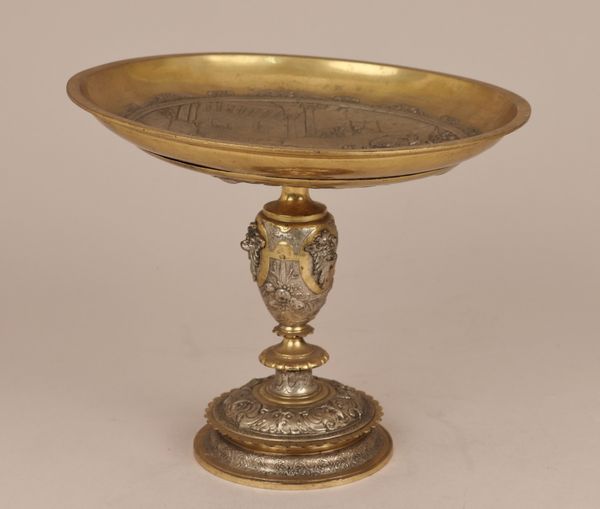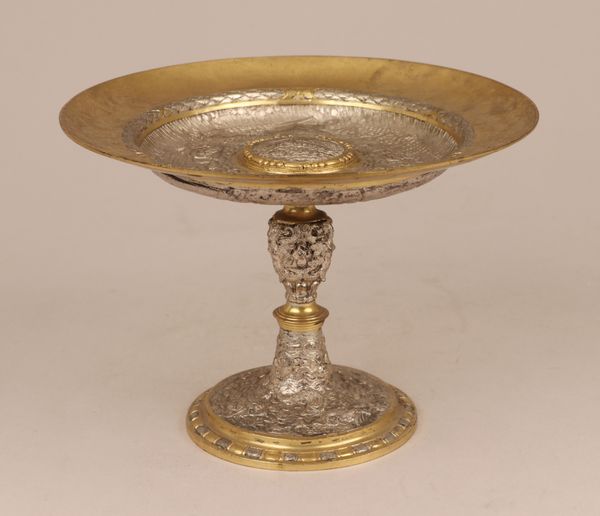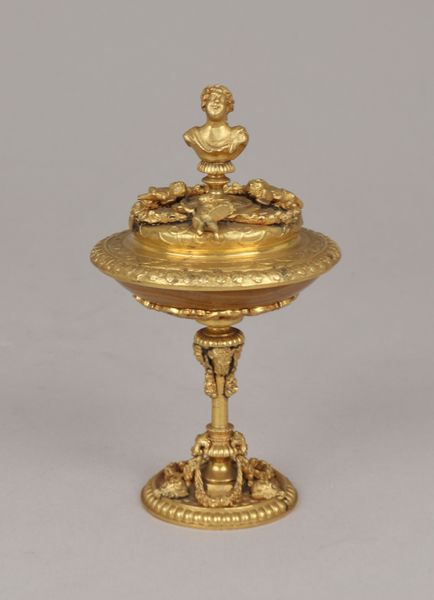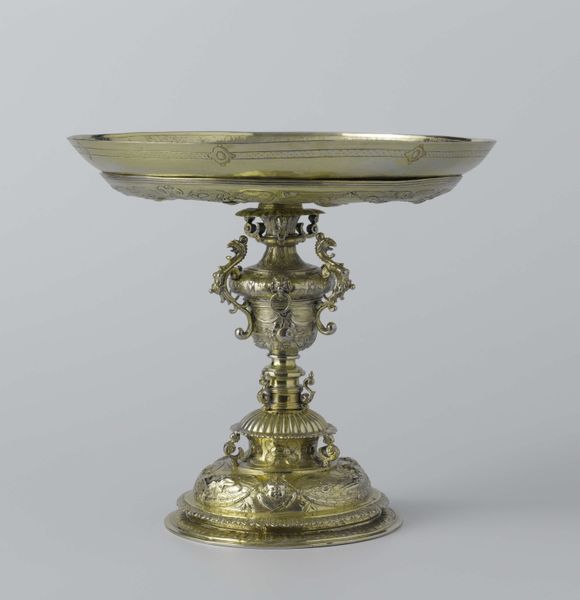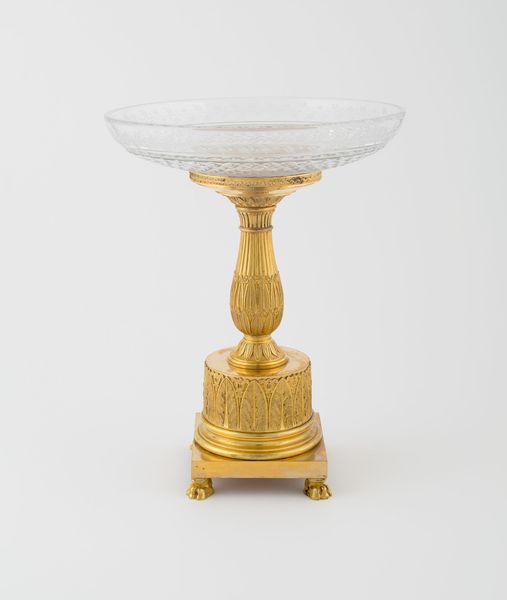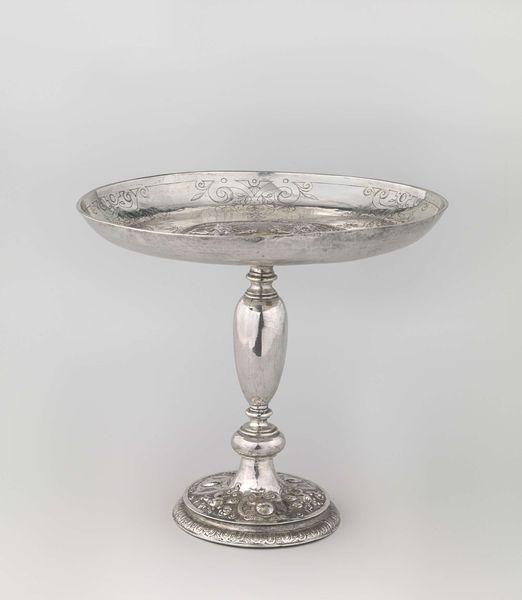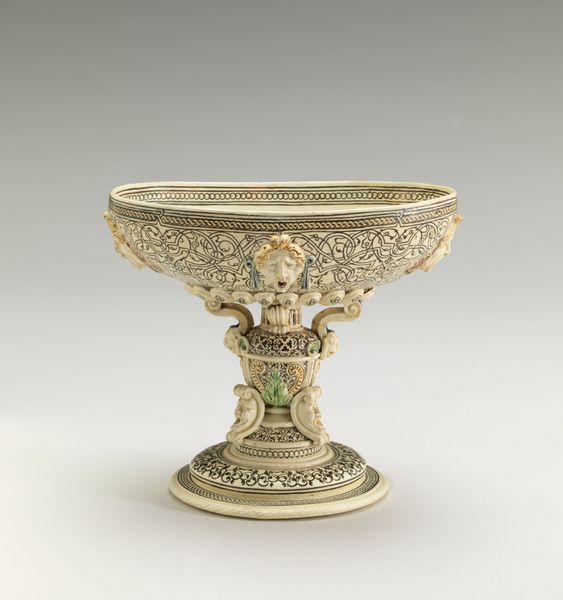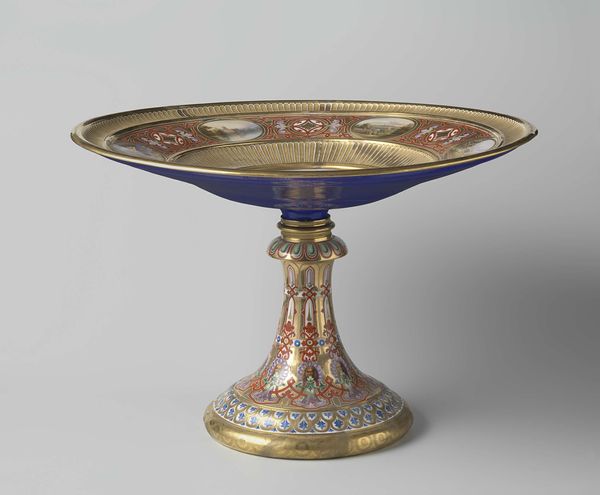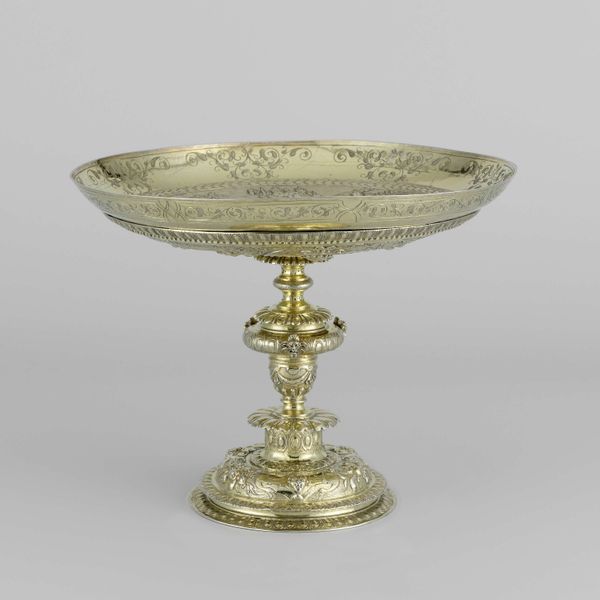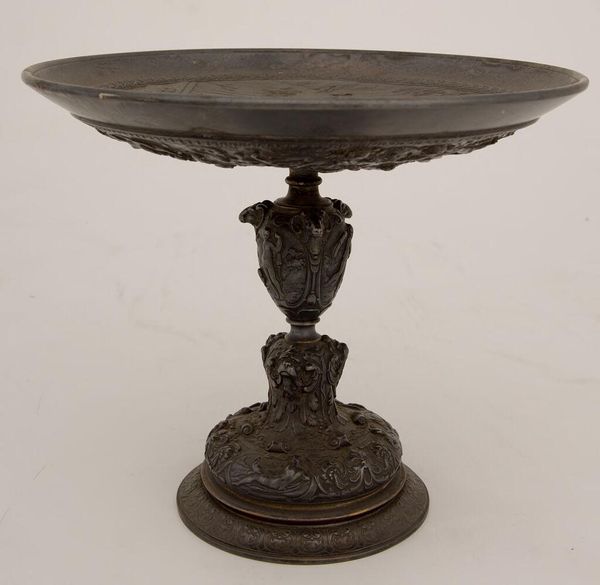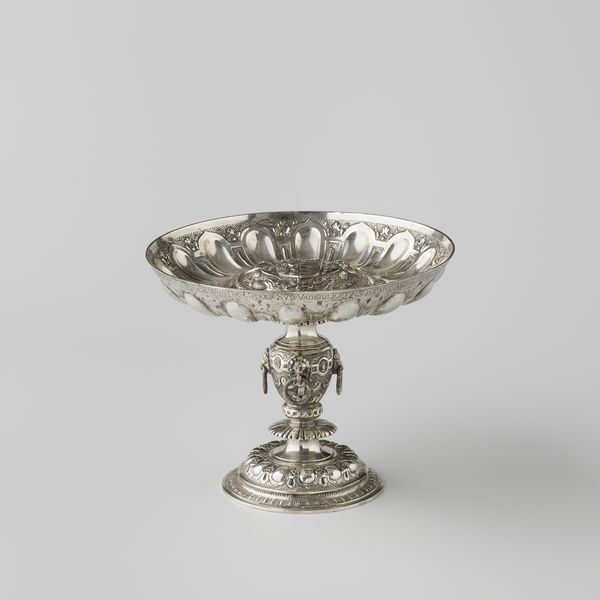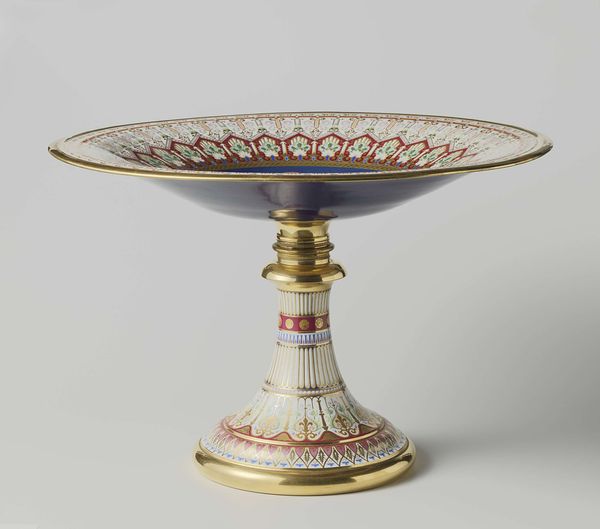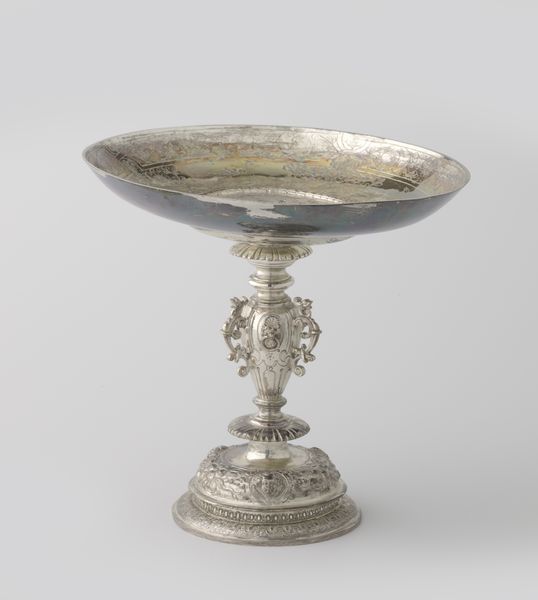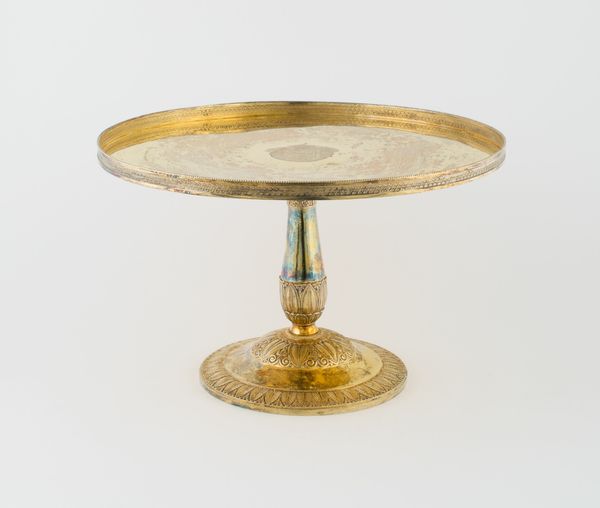
metal, guilding, bronze, sculpture
#
metal
#
guilding
#
bronze
#
11_renaissance
#
sculpture
#
ceramic
#
italian-renaissance
Dimensions: Overall: 6 3/4 × 7 in. (17.1 × 17.8 cm)
Copyright: Public Domain
Curator: Just look at this 'Tazza' from the 19th century, currently held at the Metropolitan Museum of Art. What catches your eye immediately about it? Editor: All that gleaming gold! It has such an ostentatious, almost gaudy, aesthetic quality that exudes exclusivity, wealth, and privilege. How does the use of gilding enhance or undermine its cultural significance, and in what ways does its intricate metalwork promote conversations around excess during the Renaissance? Curator: Indeed. It’s constructed from bronze, featuring extensive gilding. Thinking about its place in history, tazze like these served a very specific social function, displayed prominently in aristocratic homes, reflecting a patron's wealth, knowledge of classical antiquity and political authority. Editor: This connects with what theorist Pierre Bourdieu might say, that taste is inherently a social construct. We have to question, beyond wealth, which narratives are given the spotlight in gilded forms and which are purposefully relegated to the margins, because this certainly caters to very specific identities and power dynamics. Curator: Precisely, luxury was about much more than simple utility; it was a statement. The intricate sculpture is almost a language. Consider how access to classical knowledge shaped a family’s status. And the 'Tazza', by presenting these allegorical references became symbolic capital. Editor: The choice of bronze underneath all that gilding must affect the narrative, doesn’t it? Do the material and visual characteristics amplify notions of identity and historical power structures in that particular context? The reflective surfaces invite close inspection and prompt interrogation on whose reflections are most glorified within elite environments. Curator: It would have reflected the light of candles at feasts, certainly increasing its splendor and announcing the patron’s access to superior craftsmanship. I am very interested in understanding not just art in isolation, but within broader frameworks like trade and labor and how works such as this can be placed inside those conversations. Editor: Agreed. The symbolic capital isn't innate, right? It's assigned and amplified within the societal mechanisms you just spoke of. I look at something so steeped in tradition and ask, what meanings and connections can be made in contemporary contexts? Is it a celebration or critique of past power dynamics? Curator: These kinds of objects provide remarkable avenues for studying those dynamics, precisely because they so deliberately communicate privilege and power within society. Editor: So we might reimagine this ‘Tazza’ as not only a vessel of wealth but an archive holding layers of social meaning and ideological undercurrents to scrutinize. Thank you.
Comments
No comments
Be the first to comment and join the conversation on the ultimate creative platform.
